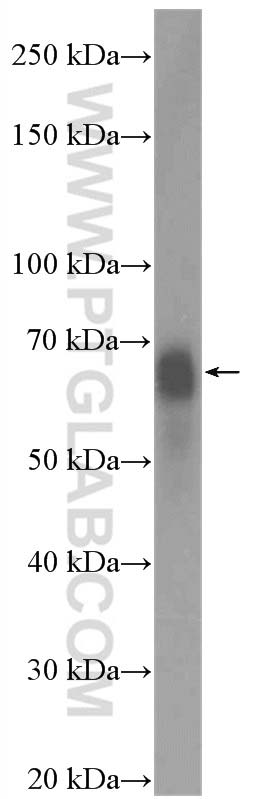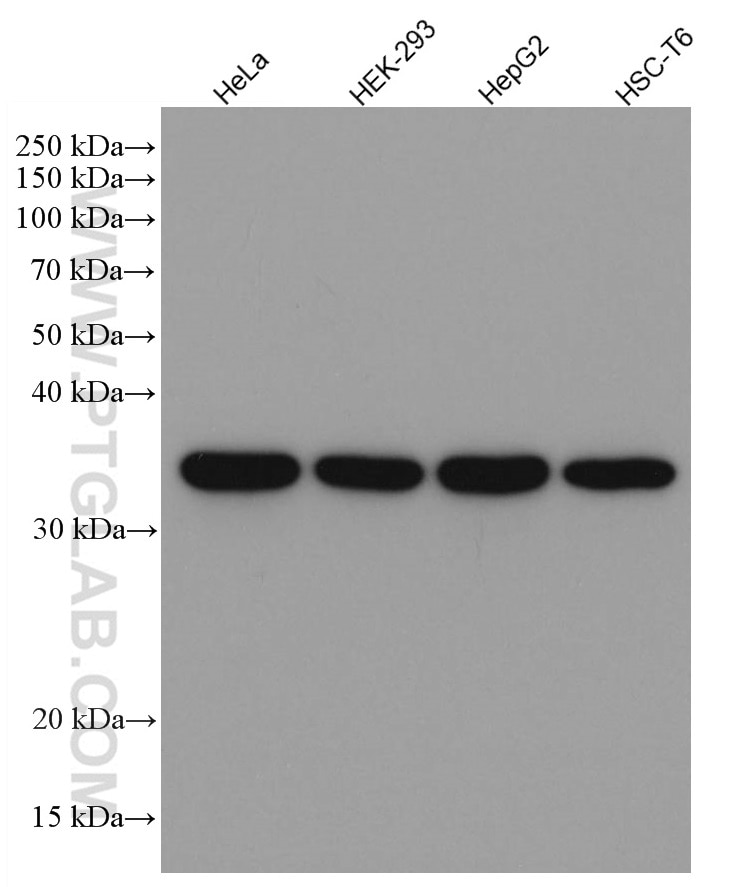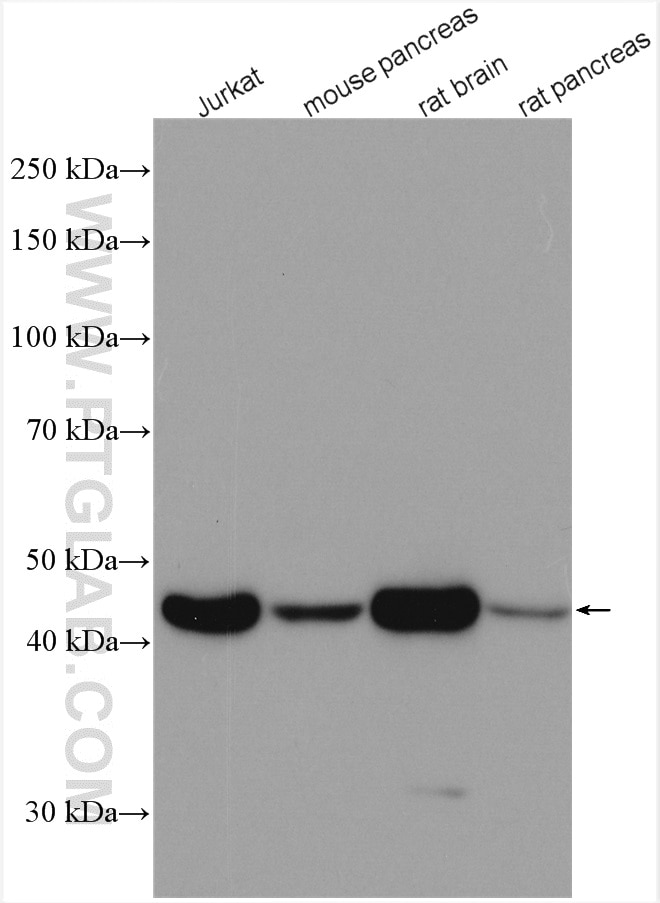C-FOS Antibody
C-FOS – a meaningful marker
Nuclear phosphoprotein c-FOS is also known as Proto-oncogene c-Fos and G0/G1 switch regulatory protein 7. One of the main functions of c-FOS is regulation of the development of cells destined to form and maintain the skeleton.
-
c-fos as a transcription factor acts in conjunction with other proteins to induce transcription of a wide variety of genes.
-
c-fos expression is used as a marker of functional activity in the brain.
-
c-fos expression is associated with tumour progression.
|
Antibody |
Type |
Catalog number |
Applications |
| C-FOS Antibody | Rabbit Polyclonal |
26192-1-AP |
ELISA, WB |
 |
|
Mouse embryo tissue was subjected to SDS PAGE followed by western blot with 26192-1-AP(FOS Antibody) at a dilution of 1:1000. |
Loading control antibodies
| GAPDH Antibody |  |
| Catalog no.: 60004-1-Ig | |
|
GAPDH is commonly used as a protein loading control in western blot due to its consistently high expression in most cell types. This enzyme participates in several cellular events such as glycolysis, DNA repair, and apoptosis. Proteintech monoclonal GAPDH antibodies are raised against a whole-protein antigen of human origin and have over 4,960 citations. |
| Beta Actin Antibody (KD/KO validated) |  |
| Catalog no.: 66009-1-Ig | |
|
Beta-actin is usually used as a loading control due to its broad and consistent expression across all eukaryotic cell types and the fact that expression levels of this protein are not affected by most experimental treatments. 66009-1-Ig has been cited in over 2,460 publications and has wide species reactivity. |
Further Reading
1. The c-FOS Protein Immunohistological Detection: A Useful Tool As a Marker of Central Pathways Involved in Specific Physiological Responses In Vivo and Ex Vivo. https://www.ncbi.nlm.nih.gov/pubmed/27167092
2. IL-17 mediates inflammatory reactions via p38/c-Fos and JNK/c-Jun activation in an AP-1-dependent manner in human nucleus pulposus cells. https://www.ncbi.nlm.nih.gov/pubmed/26988982
3. New technologies for examining neuronal ensembles in drug addiction and fear https://www.ncbi.nlm.nih.gov/pmc/articles/PMC4530016/


